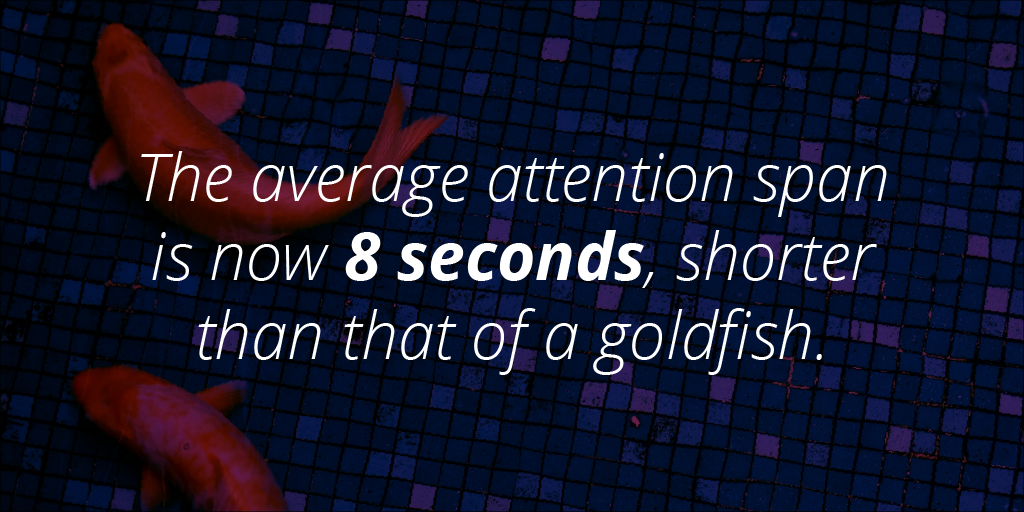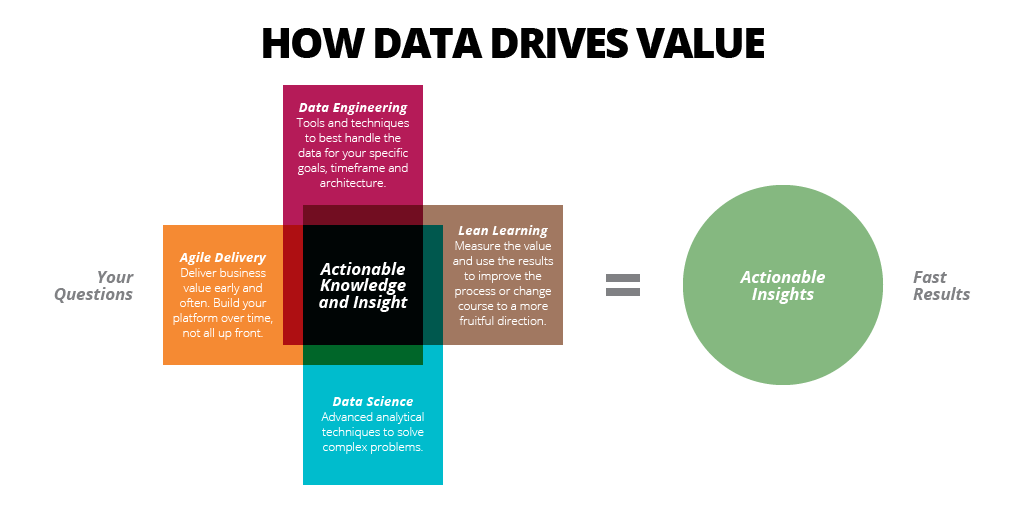
The Segment of One: Why the Shattered Future of Media is Here
Gone are the days where your only means of consuming content were through the TV or printed newspapers and magazines. Today, the new digital-first companies have disrupted the traditional media industry, creating a world that is evolving rapidly.
In this new world, traditional players and new entrants are fighting for turf. There are now endless ways to watch your favorite show or get caught up on the latest news and fashion trends. Social media channels like Facebook, Twitter, Vine, and Snapchat are becoming prime destinations for content consumption. Digital first over-the-top players such as Netflix, Hulu, and Amazon Prime Video, continue to gain subscribers in the market. They are a powerful force in capturing audience away from traditional media companies like Disney (ESPN, ABC, Pixar), Comcast (NBC, Universal, MSNBC), Time Warner (CNN, HBO, Warner Brothers), and Viacom (TNT, BET, Paramount), and Fox (Fox News, National Geographic).
Yet despite the disruptive force of individual companies, the biggest disruptor of all is the technology-empowered consumer. In this fragmented ecosystem, how can companies respond?
Media Consumption Across Generations
Consumers today are in complete control of when they consume content, where they consume it, and on what device. Consumers also drive and control the conversation on content as influencers that can make or break a traditional media company’s products.
Never before has such a drastic change in content consumption habits divided generations. When it comes to watching their favorite shows, the nearly 69 million members of Generation Z (1995 – now) and 66 million Millennials (1980 – 1995) have very different behaviors when it comes to content consumption.
Despite their reputation as “digital natives,” millennials fall in a space between true digital natives and digital immigrants. IPods and MySpace defined their teenage years.
Gen Zs, on the other hand, were raised in the era of smartphones and have been completely immersed in digital media since they were born. According to Goldman Sachs, they are now eclipsing Millennials as an economic force in the 21st century.

8 Seconds or Less: Attention Spans Are Now Less Than a Goldfish’s
Remember when kids used to color when their parents took them to restaurants? These days, you can’t go to a restaurant without seeing a child being entertained by a tablet or smartphone.
Generation Z is used to getting instant satisfaction from media sources. Famously, their attention span is now at eight seconds, shorter than that of a goldfish at nine seconds.
Their short attention spans extend to their relationships with brands. Unlike their older cohort, they are not brand loyal. In fact, they are much more budget-conscious and always looking for the best deal.
They also have high standards for the media they consume. They don’t have the patience to wait for a video to load, and if they can’t do a quick search and find the content they are looking for, they will go somewhere else.
This has profound implications for traditional media companies and marketers, who have 8 seconds—or less—to capture their audience.
Consumption Patterns Are Changing
Not only are attention spans dramatically shorter, consumption patterns have also shifted, divided by generations. We see this in how viewers consume content and on what device.
The old notion of sitting in front of the television has fragmented into the idea of the shared experience across devices. For example, how I watch my favorite shows versus how my children, members of Gen Z, watch the same shows is drastically different.
When my daughter and I both followed 'The Voice' this spring season, I would be in my favorite chair in front of the television at 8pm. My daughter, however, wasn’t in front of the TV at 8pm. She would catch it whenever she wanted to through highlights on Facebook and Twitter, all while chatting with her friends in real time.
This story illustrates the change in consumption patterns across generations. My daughter exemplifies the tendencies of both millennials and Gen Z to watch content when they want, where they want, and on whatever device is most convenient.
This culminated when she went away to college last year. We offered to buy her a TV. Her response? “No, thanks—I don’t need one,” she said. “I have my phone and my laptop”.
While other generations are catching on to the idea of becoming cord cutters and cord shavers, Gen Zs are cord nevers. Generation Z is now the largest consumer of content, and one that is always connected, always online. A study by Wikia says that 100% of GenZers are connected at least 1 hour a day, and almost 50% are connected 10+ hours per day.
Yet, they almost never watch TV.
Ultimately, media companies need to provide their customers the right content, at the right time, in the right format for their device. To do this, and to do it right, companies need to become digital-first themselves and put technology at the heart of their business strategy.
The Fragmentation of Content Creation
Remember when big studios like Universal, Disney, Fox, and MGM were the big content creators? Today, consumers themselves are a primary source for content creation.
User-generated content is now mainstream. With new outlets for content creation, Millennials and GenZers are becoming internet celebrities on a daily basis. They are becoming Snapchat and Vine stars, Instagram-famous, or going viral on Facebook.
Facebook itself has become a powerful force as a media destination. Not only is Facebook paying celebrities and traditional new outlets reportedly $50M to use their Facebook Live feature, regular users are attracting as much viewership from their live videos as the major prime time news outlets. In one milestone for the fledgling video service, Facebook Live videos filmed at the scene of the aftermath of the recent Minnesota and Dallas shootings attracted over 5M viewers, close to that of ABC World News Tonight.
Get to Know Your User
The fragmentation of the consumer experience has major implications for broadcasters and publishers. No longer can they expect their audiences to be loyal in a world where distribution power—and ad revenue—are split between traditional publishers and digital-first disruptors, who are rapidly becoming content producers themselves.
Digital-first disruptors like Netflix and Amazon hold clear advantages, but media companies too have fundamental strengths—strong brands and content development capabilities—that they can leverage to create value in this changing marketplace.
Leveraging data is the first step in understanding these fickle users, but it will take more than data. To understand the needs and regain loyalty from consumers, media companies must capture deep, dynamic, and actionable consumer insights to build an individual relationship with the customer through predictive data intelligence. They can then deliver personalized, compelling experiences anytime, anywhere to differentiate themselves in the eye of the consumer. They can also ensure advertising is effectively targeted and monetization is optimized.
From your own first-party data to social media, all possible channels of data should be captured and analyzed. Tracking the customer journey to and from social media and your primary content channels will be important in maximizing reach and engagement. Even more important is analyzing social media patterns to determine new business or partnership opportunities.
Effectively capturing actionable insights from data can open many new doors for media companies. Here are just a few:
- Deepened brand loyalty
- New business opportunities and revenue streams
- Better understanding of impactful business levers
- Predictive business planning versus rear-view mirror analysis
- Highly personalized content and offerings with greater penetration
- Optimized ad targeting for greater monetization value

Leveraging Data
The right approach to capturing and analyzing consumer data to ensure you are quickly yielding actionable insights comes at the intersection of data engineering, data science, Agile delivery, and lean learning.
Even with excellent data and taking the right approach above to capture actionable insights, there are key dependencies media companies need to be aware of:
-
Platformization is critical: Developing platforms will enable media companies to change the way they do business, seamlessly communicate across the media ecosystem, and build a foundation for new value creation.
- Respond effectively to consumer needs in real time: To future-proof themselves, media companies need to become responsive enterprises that place customer needs at the heart of innovation. Only then will they survive disruption.
Throughout this series, we’ll explore these solutions in depth, looking at the fragmented media ecosystem and the power of user-generated content, how to compete against digital-first companies and become responsive enterprises, and dive into why platformization is a critical solution.
Disclaimer: The statements and opinions expressed in this article are those of the author(s) and do not necessarily reflect the positions of Thoughtworks.

















